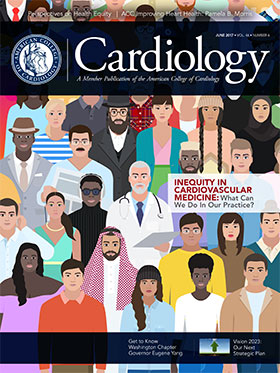Coaching to Better Quality: A Review of the ACC's NCDR Clinical Quality Coach
I’ve consistently been impressed with the utility and simplicity of the clinical decision support apps released by the ACC. To date, I’ve reviewed four of them: ASCVD Risk Estimator, Guideline Clinical app, Statin Intolerance app, and DAPT Risk Calculator.
Thus, when I learned of the latest ACC app — the NCDR Clinical Quality Coach — I quickly downloaded it and began my review. As an overview, the NCDR is the ACC’s suite of data registries to help cardiology practices and hospitals measure and improve quality of care. There are 10 registries, eight hospital and two outpatient, that reach more than 2,400 hospitals and 8,500 outpatient providers. These include the CathPCI Registry and the Diabetes Collaborative Registry.
These registries contain Clinical Quality Data (CQD) on an aggregate and provider level (based on the National Provider Identifier) so physicians can track and compare their performance to national benchmarks and identify gaps in care that may be used to inform Clinical Quality Activities (CQA). This is, of course, a requirement for Maintenance of Certification (MOC) Part IV from the American Board of Internal Medicine (ABIM), but more importantly it’s a systematic way to identify areas of improvement.
"I am hopeful the NCDR Clinical Quality Coach will gain widespread use and help physicians not only save time documenting these activities but most importantly participate in them to improve patient care."
The NCDR Clinical Quality Coach is available for both iOS and Android devices and provides a simple onboard tutorial to explain its functionality. Once you log in with your ACC account, you can access your CQD from the NCDR, which complements the physician-level dashboard available on ACC.org. These data can be used to inform the CQA you focus on. Adding a CQA is simple to do via this app. You can input the primary NCDR metric (e.g., proportion of STEMI patients receiving immediate PCI within 90 minutes), clinical focus population, supporting evidence and a reflection questionnaire.
Adding supporting evidence is also made simple via the app. This could include a photograph of the quality improvement (QI) team with team members identified, minutes from the QI meeting, a screenshot of a CQD metric or a photograph of the white-boarded process flow diagram. Once that’s complete you can submit the 11-question reflection questionnaire, which is designed to capture the effectiveness and scope of your participation in the QI effort. This simplifies the reflection activity which previously used to be a long prose entry.
Finally, after completing a CQA, the app streamlines the process of submitting the transcript of the activity to the ABIM to receive Part IV MOC credit. The app additionally has a useful resources page that links to ACC quality improvement initiatives such as Door to Balloon (D2B) and Hospital to Home (H2H), as well as Toolkits and Checklists that can help you and your practice get started with QI efforts.
Since the app was just released in early April 2017, there haven’t been enough reviews yet from practicing cardiologists. However, based on my experience using it, as well as discussions with cardiologists about their pain points regarding CQAs, I am hopeful the NCDR Clinical Quality Coach will gain widespread use and help physicians not only save time documenting these activities but most importantly participate in them to improve patient care.
 |
|
| Click the cover image above to read the latest issue of Cardiology in e-pub format or click here to read it on the web! | |
Keywords: ACC Publications, Cardiology Magazine, Benchmarking, Certification, Decision Support Systems, Clinical, Diabetes Mellitus, Hydroxymethylglutaryl-CoA Reductase Inhibitors, Methyltestosterone, Patient Care, Quality Improvement, Registries, Myocardial Infarction
< Back to Listings
